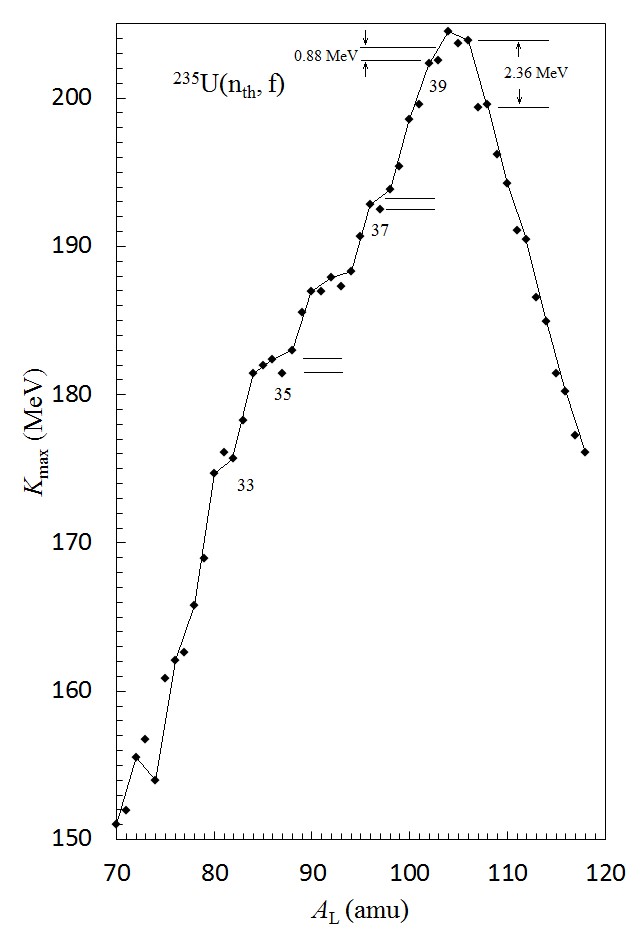Coulomb and even-odd effects in cold and super-asymmetric fragmentation for thermal neutron induced fission of 235U
DOI:
https://doi.org/10.33017/RevECIPeru2015.0004/Keywords:
cold fission, asymmetric fragmentation, symmetric fission, kinetic energy, uranium 235Abstract
The Coulomb effects hypothesis is used to interpret even-odd effects of maximum total kinetic energy as a function of mass and charge of fragments from thermal neutron induced fission of 235U. Assuming spherical fragments at scission, the Coulomb interaction energy between fragments ( ) is higher than the -value, the available energy. Therefore at scission the fragments must be deformed, so that the Coulomb interaction energy does not exceed the -value. The fact that the even-odd effects in the maximum total kinetic energy as a function of the charge and mass, respectively, are lower than the even-odd effects of is consistent with the assumption that odd mass fragments are softer than the even-even fragments.
Even-odd effects of charge distribution in super asymmetric fragmentation also are interpreted with the Coulomb effect hypothesis. Because the difference between and increases with asymmetry, fragmentations require higher total deformation energy to occur. Higher deformation energy of the fragments implies lower free energy to break pairs of nucleons. This explains why in the asymmetric fragmentation region, the even-odd effects of the distribution of proton number and neutron number increases with asymmetry. Based on a similar reasoning, a prediction of a relatively high even-odd effect in symmetric fragmentations is proposed.


